Overland Park, KS Pollen and Allergy Report for Summer 2023
Pollen Allergy Trends in Overland Park, KS
When is pollen lowest in Overland Park, KS?

February
Lowest month total PPM
Avg. PPM
When is pollen highest in Overland Park, KS?

April
Highest month total PPM
Avg. PPM
How does pollen in Overland Park, KS compare to Kansas?
Overland Park has a higher average PPM than the state of Kansas.
Overland Park yearly avg PPM:
Kansas yearly avg PPM:
How does pollen in Overland Park, KS compare to the USA?
Overland Park has a higher average PPM than the USA.
Overland Park yearly avg PPM:
USA yearly avg PPM:
Is pollen worse this year in Overland Park, KS?
Spring 2023 was worse than spring 2022.
Spring 2023 PPM:
Spring 2022 PPM:
Average PPM in Overland Park, KS
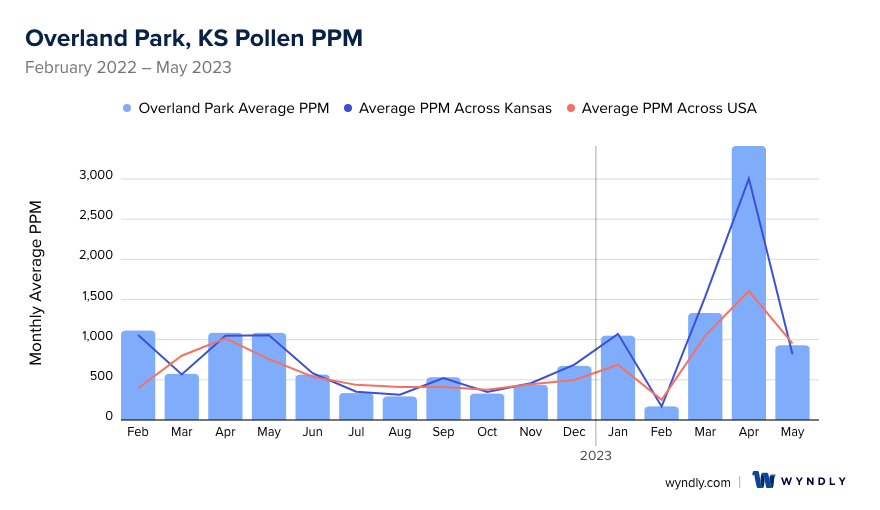
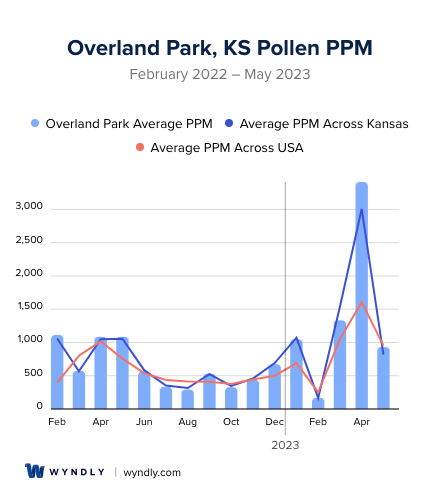
Overland Park, KS Pollen and Allergy Breakdown by Month
Grass
When is grass pollen highest in Overland Park, KS?
February has the highest grass pollen in Overland Park, KS with an average PPM of
When is grass pollen lowest in Overland Park, KS?
December has the lowest grass pollen in Overland Park, KS with an average PPM of
Tree
When is tree pollen highest in Overland Park, KS?
April has the highest tree pollen in Overland Park, KS with an average PPM of
When is tree pollen lowest in Overland Park, KS?
September has the lowest tree pollen in Overland Park, KS with an average PPM of
Weed
When is weed pollen highest in Overland Park, KS?
April has the highest weed pollen in Overland Park, KS with an average PPM of
When is weed pollen lowest in Overland Park, KS?
February has the lowest weed pollen in Overland Park, KS with an average PPM of
Overland Park, KS Pollen Monthly Breakdown by Pollen Type


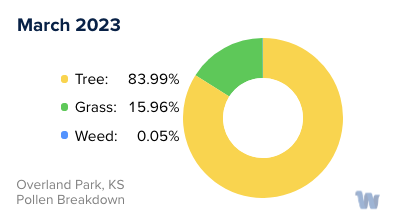
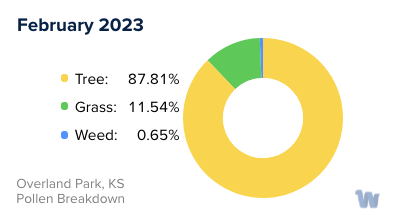

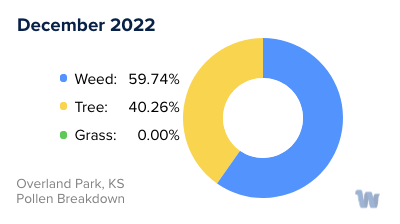
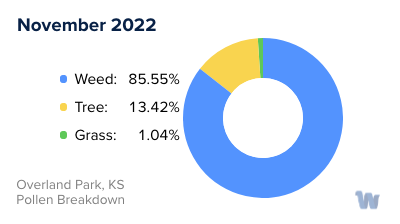
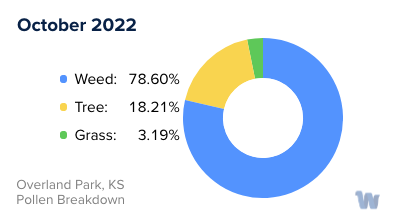

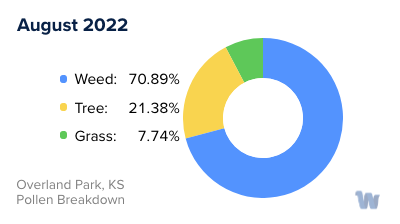
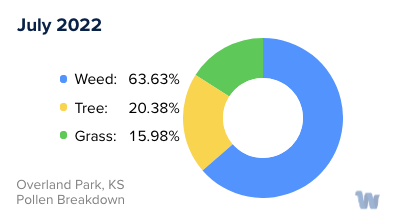


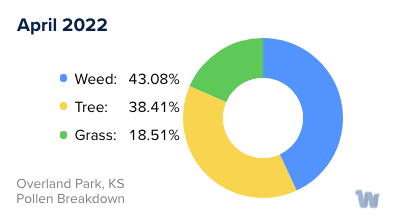
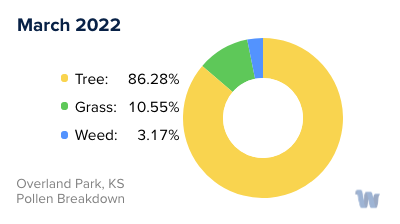
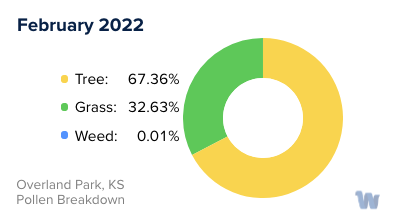
Pollen and Hay Fever in Overland Park, KS
Pollen allergies, often referred to as hay fever or allergic rhinitis, can have a significant impact on the day-to-day life of residents in Overland Park, Kansas. This condition triggers an immune response in those who are sensitive to pollen grains, leading to symptoms such as sneezing, nasal congestion, runny nose, and itchy or watery eyes.
In Overland Park, the variety of pollen allergens fluctuates throughout the year, corresponding to the life cycles of local plants. There are three primary types of pollen to be aware of: tree pollen, grass pollen, and weed pollen.
Tree pollen tends to be most prevalent in the spring. The main culprits in this region include oak, cedar, and pine trees. Their microscopic grains are released into the atmosphere to fertilize other trees, but they can also drift into human noses and throats, triggering allergies.
As we transition into late spring and early summer, grass pollen takes center stage. Overland Park is in the heartland of tall fescue country, a common type of lawn grass. Other types such as ryegrass and Kentucky bluegrass also contribute to the mix. Even though grass pollen season is shorter, the concentration of these allergens can be quite high, causing a significant surge in hay fever symptoms.
Weed pollen, particularly from plants like ragweed, tends to peak in late summer and fall. Ragweed is a highly allergenic plant and it is widely distributed across the Midwest. A single ragweed plant can produce up to a billion grains of pollen per season, making it a major trigger of hay fever.
In Overland Park, and indeed anywhere, it's important to remember that weather conditions can influence pollen levels. Warm, dry, and windy days can lead to higher pollen counts, while rainy days can help to clear the pollen from the air.
Understanding the types of pollen and their seasons in Overland Park, Kansas, can help residents be more prepared for managing their symptoms and maintaining their quality of life during pollen season. Though we've not discussed treatments or remedies here, it's always recommended to consult with a healthcare professional if you are experiencing allergy symptoms.


